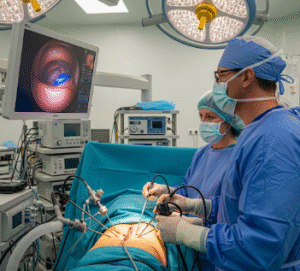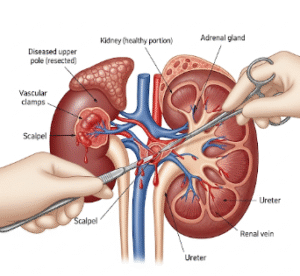Overview
Atonic seizures, also known as drop attacks, are a type of seizure characterized by a sudden loss of muscle tone, causing the individual to collapse or fall unexpectedly. These seizures are brief but dangerous due to the risk of injury. In Korea, advanced diagnostic tools and comprehensive treatment options are available for epilepsy and seizure disorders, including specialized care for atonic seizures.
What is Atonic Seizure?
An atonic seizure is a type of generalized seizure that leads to a sudden, temporary loss of muscle control. This can cause the person to drop their head, lose grip, or fall to the ground without warning. These seizures typically last less than 15 seconds but can occur multiple times a day, especially in individuals with epilepsy syndromes like Lennox-Gastaut Syndrome.
Symptoms
- Sudden loss of muscle strength or control
- Drooping of the head or limbs
- Falling without warning
- Short duration (usually under 15 seconds)
- Quick recovery with little or no confusion afterward
- May occur with other seizure types in epilepsy syndromes
Causes
Atonic seizures are often associated with underlying epilepsy, and specific causes may include:
- Genetic disorders (e.g., Lennox-Gastaut Syndrome)
- Brain malformations or injury
- Infections affecting the brain (encephalitis, meningitis)
- Metabolic disorders
- Tumors or lesions in the brain
- Developmental abnormalities
Risk Factors
- Family history of epilepsy
- Preexisting neurological disorders
- History of brain trauma or infections
- Certain childhood epilepsy syndromes
- Brain surgery or malformations
Complications
- Recurrent injuries from unexpected falls
- Fractures, head trauma, or facial injuries
- Psychosocial issues like anxiety, embarrassment, or social withdrawal
- Poor academic or work performance due to seizure unpredictability
- Cognitive delay in syndromic epilepsy cases
Prevention
While atonic seizures can’t always be prevented, the risk and frequency can be reduced with:
- Strict medication adherence
- Regular neurologist consultations
- Use of protective headgear in severe cases
- Avoiding seizure triggers (sleep deprivation, flashing lights, stress)
- Early intervention in childhood epilepsy syndromes
Treatment Options in Korea
South Korea offers highly specialized neurology and epilepsy care through university hospitals, epilepsy centers, and pediatric neurology clinics.
1. Diagnosis
- EEG (Electroencephalogram): Identifies abnormal electrical activity
- Video EEG monitoring: Captures seizures for precise diagnosis
- Brain MRI: Detects underlying structural abnormalities
- Genetic testing: If syndromic epilepsy is suspected
2. Medications
- Anti-epileptic drugs (AEDs):
- Valproic acid, Lamotrigine, Clobazam, and Rufinamide are commonly prescribed in Korea
- Combination therapy is often needed for syndromic epilepsy
- Regular follow-up ensures dosage adjustment and monitoring for side effects
3. Ketogenic Diet
- Especially effective in children with drug-resistant atonic seizures
- Korean hospitals like Asan Medical Center and Severance Hospital provide ketogenic dietary programs supervised by neurologists and dietitians
4. Surgical Treatments
- Corpus callosotomy: A surgical procedure that disconnects the brain hemispheres to prevent seizure spread
- Considered in severe, medication-resistant cases
5. Vagus Nerve Stimulation (VNS)
- A device implanted under the skin that sends electrical impulses to the brain
- Available in tertiary hospitals across Korea as an option for patients unresponsive to medication
6. Rehabilitation and Support
- Physical therapy for injury recovery and balance
- Psychological counseling for children and families
- School-based support and seizure safety training
- Seizure alert systems or wearable fall-detection devices
7. Pediatric Care
- Specialized pediatric neurologists treat children with epilepsy syndromes













